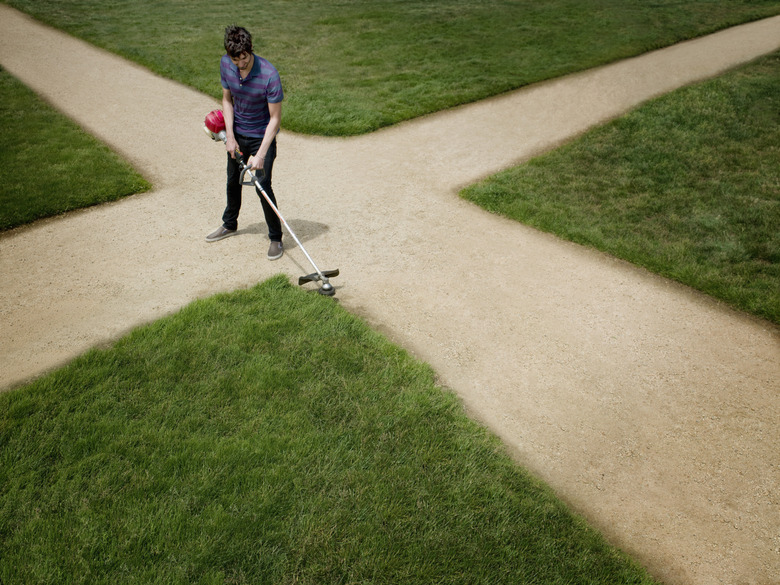How To Install A Blade On An Echo Weed Eater
A weed eater is an essential tool in the arsenal of a homeowner, as it cuts grass and weeds in places that the blades of your lawnmower cannot reach, such as around the base of your mailbox or the bottom of a fence. Some manufacturers, such as Echo, build weed eaters that can be equipped with cutting blades that can be used to cut through thick weeds and brush that the standard nylon string trimmer head cannot cut through.
Step 1
Attach the metal blade shield to the end of the trimmer using the included hardware.
Step 2
Flip the trimmer head upside-down and slide the upper plate onto the end of the shaft.
Step 3
Place the blade on top of the upper plate, positioning it so the arrow painted on the blade points in the same direction as the blade rotates.
Step 4
Place the lower plate over the center of the blade and attach it by turning a 10 mm left-handed locking nut counterclockwise until it's tight enough to hold the blade in place.
Step 5
Line up the hole in the upper plate and the notch in the gear housing. Slide the locking tool into the hole.
- A weed eater is an essential tool in the arsenal of a homeowner, as it cuts grass and weeds in places that the blades of your lawnmower cannot reach, such as around the base of your mailbox or the bottom of a fence.
- Flip the trimmer head upside-down and slide the upper plate onto the end of the shaft.
Step 6
Tighten the 10 mm nut until it is securely in place. Slide a cotter pin through the hole at the end of the shaft. Bend the ends of the cotter pin around the shaft.
Step 7
Remove the locking tool.
Weed Eater Doesn't Have Any Power
Before you investigate bigger problems causing your Weed Eater to lose power, make sure the switch is turned to the "on" position. Weed Eater recommends mixing 3.2 ounces of two cycle air cooled engine oil with a gallon of regular gas to obtain this ratio. If you have a battery powered or electric Weed Eater trimmer that won't start, turn the power switch to the "off" position and check the bottom of the trimmer. Remove the spark plug and clean the electrode with a wire brush. Spark plugs must also have a precise gap to function properly. Gas powered Weed Eater trimmers that produce a fuel smell but won't start, may have a flooded engine. Set the trimmer aside for 10 to 15 minutes to allow the fuel to vaporize, and then simultaneously squeeze the throttle trigger and pull the starter rope handle repeatedly until the engine starts and runs. This may require pulling the starter handle many times if the weed eater is badly flooded. Never operate your Weed Eater if the fuel lines are damaged or leaking fuel.
- Tighten the 10 mm nut until it is securely in place.
- If you have a battery powered or electric Weed Eater trimmer that won't start, turn the power switch to the "off" position and check the bottom of the trimmer.
Things Needed
- Screwdriver
- 10 mm wrench
- Locking tool
- Cotter pin
